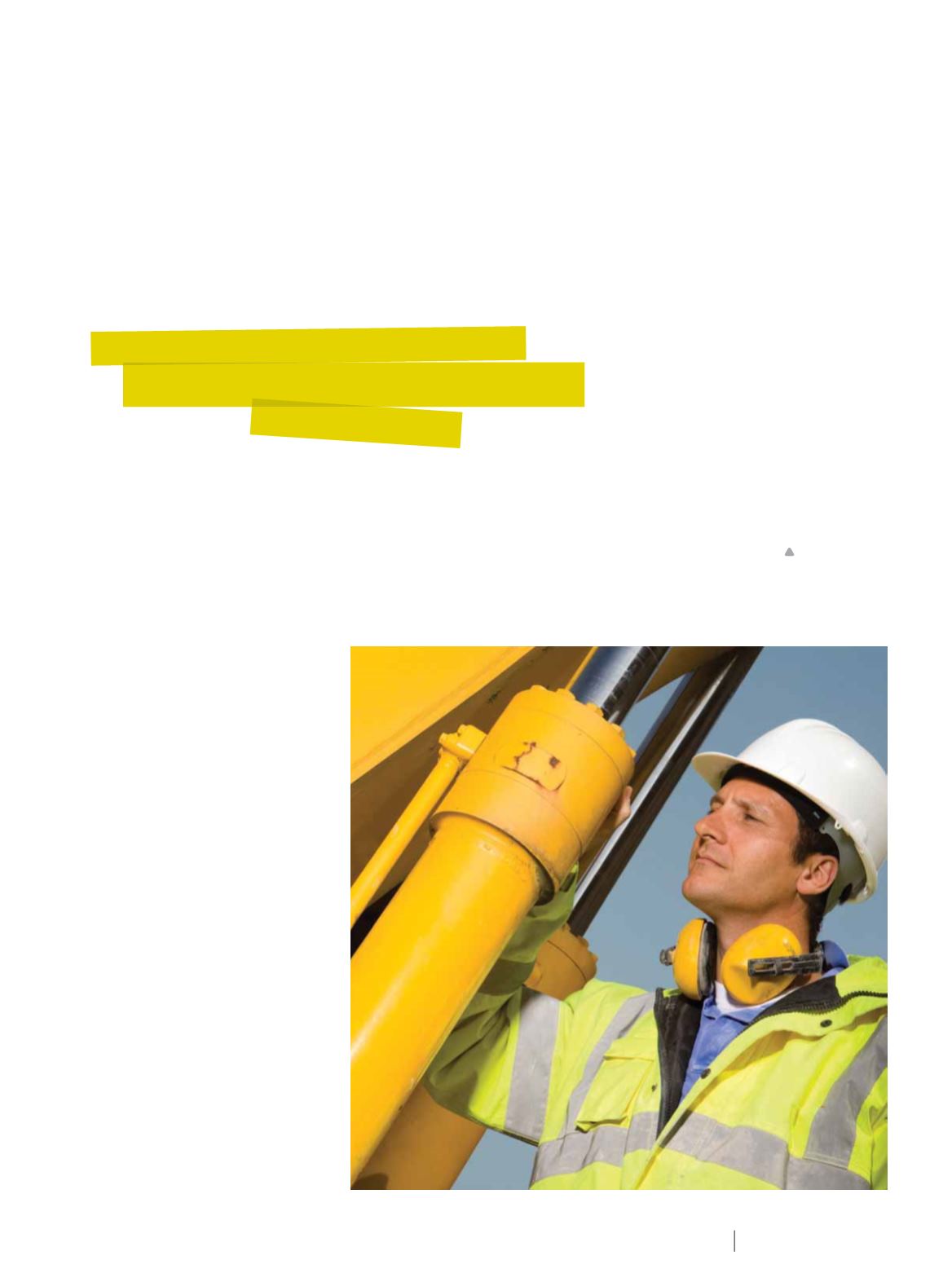

E L E C T R I C A L CO N N E C T I O N
S UMM E R 2 0 16
9 7
wearing hearing protection.
“If you have a pre-existing hearing
injury, conventional hearing protection
can reduce the ability to hear speech
and warning sounds. This means
many workers are not inclined to wear
hearing protection at all. We conducted
some focus groups asking why people
were engaging in these behaviours and
their immediate concern was being
well enough to go home that night [as
opposed to the cumulative effects of
hearing damage],” Dineen said.
With this in mind, he stressed the
importance of preventing hearing
loss early.
“The issue is to get people before
they have injured their hearing – when
they can still hear while wearing
conventional ear protection,” he said.
Access to the right class of hearing
protection will also to encourage use.
Ear plugs with lower decibel ratings,
which provide hearing protection
while still allowing wearers to hear
background noises, can be a
good option when the highest rating
isn’t required.
“Class 5 (the highest level of hearing
protection) is not always the best
solution. There are different designs for
different ratings and uses which should
be matched to the application and risk,”
says product development manager of
Pro Choice Safety Gear Brad Rodgers.
Tinnitus, the clinical term for ringing,
whistling or hissing in one
or both ears, is a common symptom
of hearing damage. This is not actually
a ‘sound’ but, according to Dineen,
is the noise of the auditory system as
the brain tries to adjust for the
hearing damage.
“Tinnitus, initially is a warning sign
that hearing damage is occurring,”
Dineen said, adding that it is usually
also combined with muffled hearing.
“Your ear is dampening to try and
protect itself. If you’re constantly
working in a loud environment, that
hearing loss doesn’t come back.
“Symptoms of long term Tinnitus also
include intolerance to some noises.
Everyday sounds that you could previous
tolerate such as putting a cup on the
bench or putting a saucepan in the sink
becomes an unpleasant experience,”
Dineen said
Training and education is critical to
ensuring workers can self-diagnose
when hearing damage is occurring
and therefore take appropriate
protective measures.
“It’s really important that workers
can identify the initial symptoms of
hearing damage… recognition is often
low until they get feedback from friends
or family,” he said, adding that loud
televisions or asking people to repeat
themselves were obvious signs.
He suggested workers use the car
radio for self-testing their hearing
post-shift as a simple method to test for
short-term hearing loss.
Step 1: When driving home after
work, set the car radio at a
‘comfortable’ volume while driving
home so that you have a comparison
point the next morning.
Step 2: When driving to work the
next day, if the volume is no longer
‘comfortable’ (e.g. it is too loud), it is
an indication of short-term hearing
damage the day before.
ProChoice Safety Gear
www.prochoice.com.au“Training and education is
critical to ensuring workers can
self-diagnose.”
















